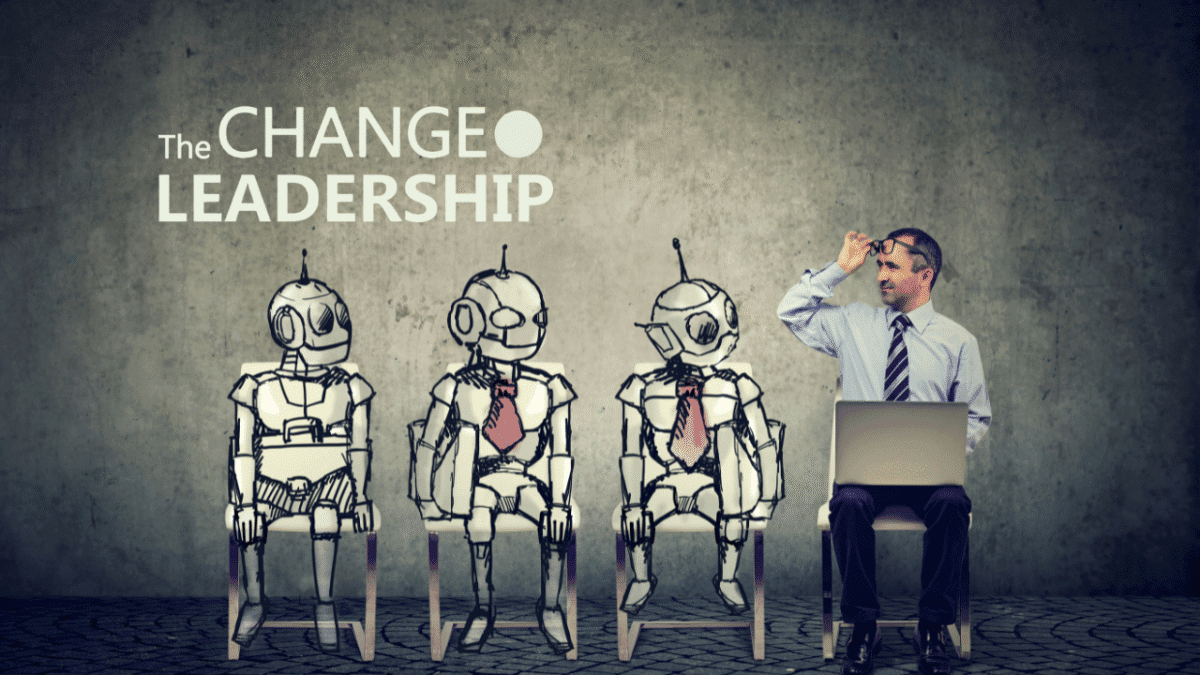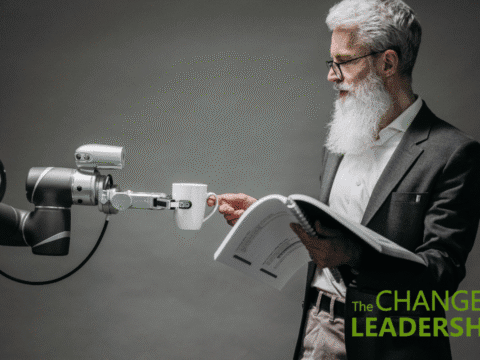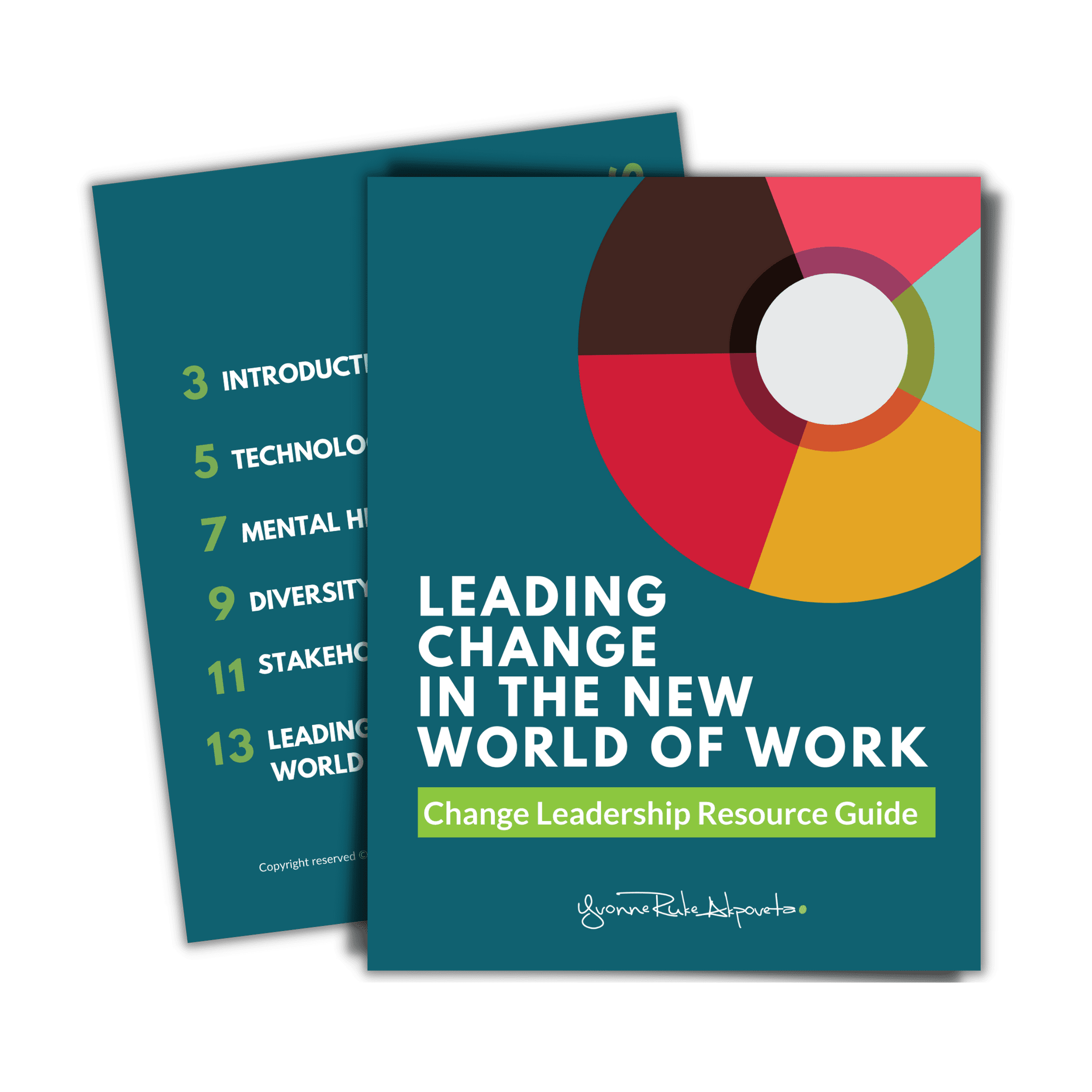Why AI Adoption and Change Efforts Fail Without Culture & Change Leadership
Why AI Adoption and Change Efforts Fail Without Culture & Change Leadership

When organizations rush to adopt AI, new technology, or transformation programs, it’s easy to underestimate the foundation that determines success: culture and mindset.
Without them, even the most promising initiatives falter. Transformation rarely fails because of technology. It fails because of people being onboard. Think of it like upgrading the engine of a plane mid-flight. No matter how powerful the engine, if the crew isn’t aligned and trained to fly it, the journey won’t go far.
The same applies to change. Technology may be ready, but people and culture must be too.
Let’s delve into why culture matters more than ever and how change leaders at every level can begin shaping the conditions for success, even without formal authority.
1. Why Culture and Innovation Must Coexist for Successful AI Adoption
As AI becomes more embedded in how work gets done, the difference between organizations that thrive and those that stall lies not in tools or data but in culture.
-
Korn Ferry’s Top Leadership Trends of 2025 highlights adaptability, collaboration, and authentic leadership as essential traits for future-ready leaders. The report emphasizes that leaders must become “agile learners, inclusive visionaries, and tech-savvy innovators.”
-
Microsoft’s 2025 Work Trend Index introduces the concept of the Frontier Firm — organizations that do not just test AI but rearchitect their entire model around it. Microsoft notes that 82 percent of leaders view this year as pivotal for rethinking strategy and operations.
-
Gartner’s Future of Work Trends 2025 warns that AI-first approaches can backfire if not aligned with culture, noting that successful organizations integrate AI with employee well-being, engagement, and purpose, not just systems.
These insights reveal a pattern: AI amplifies whatever cultural dynamics already exist. If your culture resists learning or risk, AI will expose those fractures even faster. AI is like a mirror. It reflects and magnifies what already exists in your organization. If the culture is curious and collaborative, AI accelerates growth. If it is fearful or siloed, AI magnifies those same barriers.
2. What Culture Really Means (And How You Can Influence It)
Culture is not a slogan, a value statement, or a motivational poster. It is how people actually behave when no one is watching. It is the micro moments between big initiatives, the daily interactions and unspoken norms that either reinforce or erode change.
Culture is the water your fish swim in. Often invisible, but it determines whether they thrive or struggle to breathe.
This means everyone, from executives to team contributors, has the ability to influence it. When culture conflicts with change, innovation, or AI adoption, failure becomes inevitable:
-
A bold AI pilot launched in a culture that punishes failure will breed fear, not experimentation.
-
New processes given to teams who are not trusted to adapt will be ignored.
-
Even the most brilliant strategy becomes academic if behaviors and norms do not shift.
Culture is not a soft layer. It is the ground on which change stands. Without alignment there, even strong initiatives crumble.
3. Why AI Adoption and Change Efforts Can Fail
Research consistently shows that when culture lags, transformation stalls.
-
McKinsey’s 2025 AI in Action Report found that while 94 percent of employees report familiarity with generative AI, many leaders underestimate its actual use within their organizations. This misalignment weakens strategy and communication.
-
Microsoft’s Frontier Firm data shows that AI adoption is reshaping job design and team structures, requiring new leadership models and cultural adaptation.
-
Gartner forecasts that by 2026, 20 percent of organizations will use AI to flatten structure, potentially removing more than half of middle management roles. Without cultural readiness, such structural shifts trigger resistance and breakdown.
These findings make one thing clear: AI’s biggest barriers are not technical. They are behavioural. The promises of AI may be clear, but when culture lags behind, the risk of failure grows even faster.
4. How Change Leaders Can Influence Culture and Drive AI Adoption
You do not need a title to shape culture. Influence begins with consistent, intentional action. Six ways to start leading cultural change today:
-
Model small behaviours consistently – Speak openly about uncertainty. Ask questions. Show what learning looks like. Transparency builds trust.
-
Frame failures as learning – Treat missteps as signals, not setbacks. When you reframe failure, others follow your lead.
-
Surface assumptions and norms – Ask your team, “What are we silently tolerating?” or “What no longer serves us?” Simply naming these truths begins to shift culture.
-
Anchor new behaviours with visible support – Recognize people who experiment or speak up. Visibility reinforces value.
-
Build small safe zones for experimentation – Find allies. Pilot ideas on a small scale. Use success stories to expand influence.
-
Translate culture for AI and transformation – For every new tool or initiative, co-create culture commitments: how your team will approach collaboration, experimentation, and learning.
Culture change does not begin with an email. It begins with modelling what better looks like.
5. Building Sustainable Culture and Change Leadership for AI Success
An AI ready culture is not built overnight. It requires intentional change leadership to embed values and behaviors that align with experimentation, agility, and continuous learning.
You can think of culture and change leadership as the operating system that everything else depends on. You can install the latest AI software, but if the operating system is outdated, nothing runs smoothly. Practical strategies include:
-
Education at every level so everyone understands AI’s possibilities and limitations
-
Practical experimentation through pilots and sandboxes to learn without fear of failure
-
Recognition and rewards that celebrate curiosity, collaboration, and adaptability
-
Human centered leadership that provides empathy, trust, and meaning alongside data
-
A change leadership mindset that empowers people across levels to lead and respond to change
If you want to deepen your organization’s capability, start with building an AI-ready culture supported by leadership training, coaching, and practical frameworks.
Explore this related article: How to Choose the Best Change Leadership or Change Management Training for Your Organization.
Build Your Change Leadership Capability
If you are looking to strengthen your team’s adaptive leadership and change mindset, our Corporate Change Leadership Workshops are designed to help.
We partner with organizations to build cultures of adaptability, confidence, and results through real-world, experiential training. Contact us to learn how we can support your team.
If you are focused on your own growth as a change leader, explore our Change Leadership Accelerator, an accredited, self-paced program that helps professionals build practical skills and credibility to lead change in today’s evolving environment. Learn more about the Accelerator.
Join our waitlist for the Change Leadership Conference 2026 on leading and responding to change in today’s disruptive environment.

Yvonne is a Change Management Strategist, Catalyst and Change Leadership Advocate who is passionate about working with professionals and organizations to help them to successfully lead change. You can learn more about Yvonne at: www.yvonnerukeakpoveta.com, and also connect with her on LinkedIn, Facebook, Twitter and Instagram.




